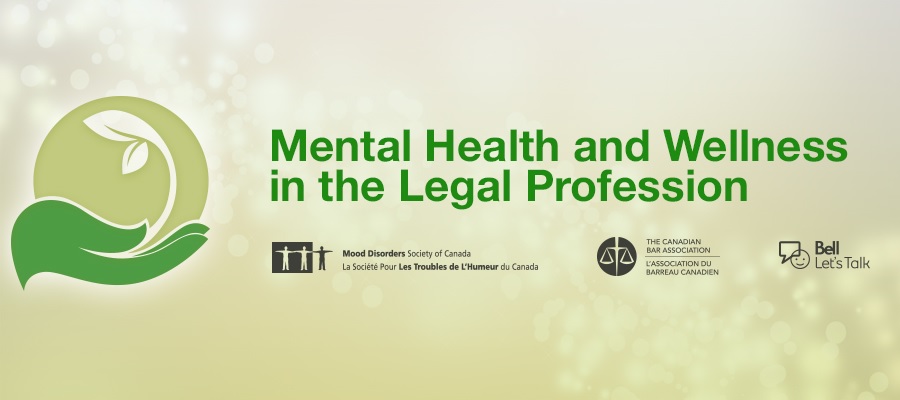Long-time Association Exec Adapts to New Rules of Engagement

We caught up with John Hoyles, CEO of The Canadian Bar Association, on the day that Justin Trudeau — son of legendary Prime Minister Pierre Trudeau — was sworn in as Prime Minister of Canada. A keen student of history, Hoyles uses a blend of old school and new school approaches to keep the powerful CBA humming along.
![]()
Canada does not have the same surplus of lawyers as the U.S.
We get about $50 million a year worth of volunteer time. That allows us to punch way over our weight.
The practice of law is changing radically. If we don’t drag ourselves into the 22nd century, we will be left in the dust.
Association Adviser: John, tell us a little about the CBA.
 John Hoyles: The CBA is a professional, voluntary organization which was formed in 1896, and incorporated by a Special Act of Parliament in 1921. Today, the Association represents 37,000 lawyers, judges, notaries, law teachers, and law students from across Canada. Approximately two-thirds of all practicing lawyers in Canada belong to the CBA.
John Hoyles: The CBA is a professional, voluntary organization which was formed in 1896, and incorporated by a Special Act of Parliament in 1921. Today, the Association represents 37,000 lawyers, judges, notaries, law teachers, and law students from across Canada. Approximately two-thirds of all practicing lawyers in Canada belong to the CBA.
AA: How does CBA differ from the American Bar Association?
JH: CBA is a national organization on the ground, but also connected to provincial bar associations. That allows us to be more effective and speak on behalf of the whole profession. That’s very different from how it works in the U.S., in which the American Bar Association [ABA] is not aligned with state bar associations.
AA: You’ve been at CBA for over 20 years. Tell us a little about your earlier background.
JH: I was always a voracious reader growing up, which I inherited from my father. I was terrible at math and the sciences, but did very well in English and majored [in that subject] in college. I would not describe myself as a speed reader, but I do read very quickly and I do read everything. That was very helpful when I was practicing law and also in my role now. When I get a lot of background material from my staff, I’m able to read and absorb it very quickly and get to the germane points and issues. It works the same way with email. I don’t use email folders. I get about 150 emails a day. They’re on my home page only, because if I stick them in folders I’ll never get to them. I go through them all, one at a time —at the beginning, middle and end of the day.
AA: How has the CBA been effected by declining law school enrollment?
JH: We don’t have the same glut of lawyers in Canada as you do in the U.S., and Canada wasn’t impacted as greatly by the recession [of 2008-09]. We still have many more applicants to law schools than there are spaces. But, where we are having a problem is finding apprenticeships for young law school graduates — and you need to do an apprenticeship before taking the bar.
Also, with the high cost of tuition, not as many graduates are going into the more altruistic areas of law where we need people. They want to work in big firms where they can make more money and pay off student debt. Our polling indicates that there are a lot of people practicing law who aren’t particularly happy about it. That needs to change.
AA: So, what is CBA doing to keep young lawyers engaged?
JH: We’re just about to roll out a Young Lawyer Strategy. Our focus groups told us that we have to “up our game.” We have a Young Lawyers Forum — a group of 20 from all around the country who get together to brainstorm. We’re also revamping the website so people can find exactly what they’re looking for ASAP. If they can’t find it right away, they’ll go someplace else and never come back to your site.
AA: Any other surprises from your polling and focus groups?
JH: Yes. Everyone thought we needed an app. But what people really wanted was clearer information about how to get engaged with the CBA. The American Bar Association has the same challenge. We’re working on a separate part of the website that will be devoted to helping young lawyers find out about our Futures Initiative and how to get involved in special interest areas.
AA: Can you tell us about CBA’s health and wellness initiative? That’s not something you see every day at a professional association.
JH: I was a big driver of the Mental Health and Wellness in the Legal Profession initiative and helped raise the money for it. It’s a four-module online course that raises awareness and gives lawyers, judges and law students information about mental health and addiction issues, their causes and symptoms, as well as prevention treatment options. Response has been absolutely amazing. We did a big survey of both members and non-member attorneys across the country and found that 68 percent had big concerns about depression, stress and anxiety. It’s not just about identifying these issues, but learning how to avoid them. We partnered with the Mood Disorders Society of Canada on this initiative, and they gave us the platform to use. I’m very proud of this initiative since I’ve spoken publicly about my own battles with depression and how to get rid of the stigma.

AA: Are certain types of lawyers more prone to mental health issues than others?
JH: We found three groups most in need of help:
a) The young ones in law school.
b) Those 4 to 5 years out of school.
c) Partners who are at the top of their game — about 15 years out — billing the lights out and under even more pressure than partners who are 20 to 25 years out.
AA: What would you say are CBA’s most important member communication vehicles?
JH: CBA News and You is an email we send out to all members every six weeks. Section newsletters, which we’re converting to blogs, are also getting lots of hits thanks to their immediacy. Also, we just did a whole social media campaign on access to justice. Twitter and Facebook have been very effective, but LinkedIn not so much. We have very good analytics now and are light years ahead of where we were two years ago in terms of being able to figure out what’s working and what’s not working. We now have a full-time analytics person on staff and that’s been a big help.
AA: What are your communications challenges with respect to engaging your membership?
JH: Like every association, our members can feel they’re being bombarded with stuff. We haven’t found the silver bullet yet. We know we’re probably sending out too much email to members, and we’re trying to address that and be more [customized]. For instance, we do separate newsletters for 32 different sections and eight forums. That’s a lot, but we only publish them a few times per year for each section.
We also reduced the hard copy version of the magazine from eight times per year to four and really amped up the online edition. We haven’t invested enough money in the Web and IT, but we will. We know that’s what the younger folks want and that’s the future of our organization.
AA: How would you describe your leadership style?
JH: We have a staff of 90 here in the national office (Ottawa) and another 80 in the provincial offices. None of the executive directors in the branches report to me. That’s very different from how it was when I arrived here 20 years ago. There’s always tension between the national organization and its provincial branches. But, one of the things I’m proudest of is that we work very well together now. We’re still trying to minimize duplication of effort, but I try to work on a consensus basis. I do the same thing with my senior management team. There are four of us, and we make decisions collectively. I don’t have to pound the table and shout, “This is the way it has to be!” I found that with four brains working on an issue, you get a much better result than just one brain. I find you get better results when everyone’s bought in to a decision than when they’re resisting it.
AA: What is it that you like most about working in the association world?
JH: The people! I’ve dealt with thousands of lawyers over the years and I’ve only met three jerks. People who are engaged and interested in volunteering tend to be pretty positive in nature. I’ve made so many friends, and we’ve had so much impact on the public — from same-sex marriage and gun control to gender issues and racism. We’ve always taken a leading role. It’s all thanks to our volunteers. I’ve never had a volunteer say ‘no’ to me. We get about $50 million a year worth of volunteer time. That allows us to punch way over our weight. It’s a real partnership between the staff and the volunteers.
AA: How does CBA bring new ideas to the table? Do you have a formal culture of innovation?
JH: We’re not as nimble as we should be. Our governance structure is very complicated, and that’s one of the things we’re addressing in our Re-Think Initiative right now. Our director of Strategic Initiatives, Aviva Rotenberg, and our deputy CEO, Joan Bercovitch, are brilliant. They’re always looking for new opportunities such as the Young Lawyers Strategy. My job as CEO is to make sure they have what they need to run with it. The practice of law is changing radically. If we don’t drag ourselves into the 22nd century, we will be left in the dust.
AA: Is there anything else our readers should know about you and the CBA?
JH: I was just named the Honorary Colonel for the Judge Advocate’s Office of Canada. I’m essentially the head lawyer for all three branches of our military who can explain to the larger legal world what the role of a military lawyer is. I have no military background, but you need a lawyer with you at all times to help set the rules of engagement in any theater of war. For instance, can we use our fighter jets in Qatar to bomb ISIL?
AA: John, what is the best part about being a lawyer?
JH: You can make a difference and really change things, from mergers and acquisitions to helping families in conflict. I have many positive memories of practicing law in a small community. Also, for young people in your audience, the analytical training you get from law opens the door to so many things besides the traditional practice of law. And if you do decide to pursue a legal career, more and more firms are understanding the value of work/life balance, mental health and staff retention.

